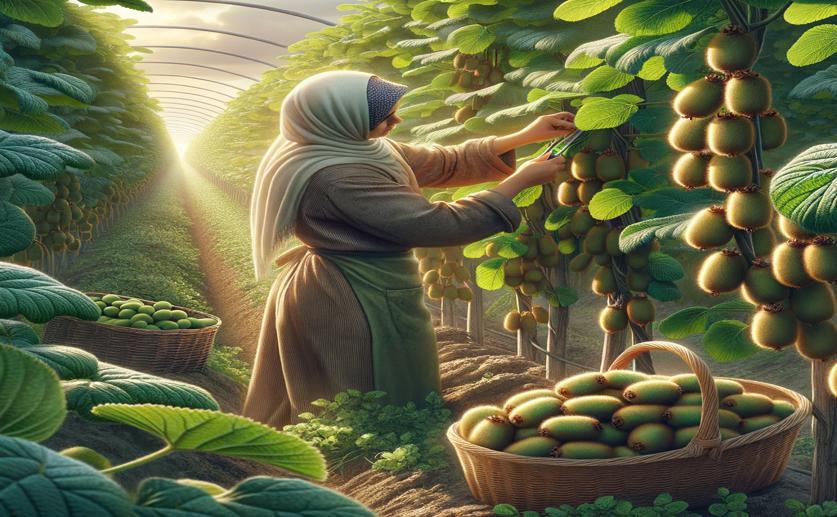
Improving Kiwifruit Growth and Quality with Pruning and Thinning
Jim Crocker
1st May, 2024

Image Source: Natural Science News, 2024
Key Findings
- Study from India shows pruning to 12 nodes/cane and thinning to 6 fruits/shoot optimizes kiwifruit growth
- This pruning and thinning enhance fruit quality, increase yield, and improve fruit size and nutrients
- The technique boosts farmer profits by maximizing harvest quality and quantity sustainably
FruitsAgriculturePlant Science
References
Main Study
1) Appraisal of extended cane length and fruit thinning strategies on the performance of growth yield and quality of kiwifruit.
Published 30th April, 2024
https://doi.org/10.1016/j.heliyon.2024.e29546
Related Studies
2) The nutritional and health attributes of kiwifruit: a review.
3) The effect of cane vigour on the kiwifruit (Actinidia chinensis) and kiwiberry (Actinidia arguta) quality.
4) Comprehensive Utilization of Thinned Unripe Fruits from Horticultural Crops.
5) Competition for assimilates and fruit position affect fruit set in indeterminate greenhouse tomato.



 24th January, 2024 | Jim Crocker
24th January, 2024 | Jim Crocker